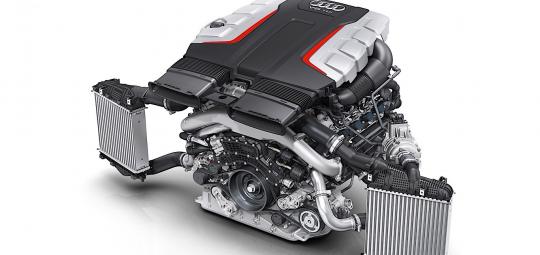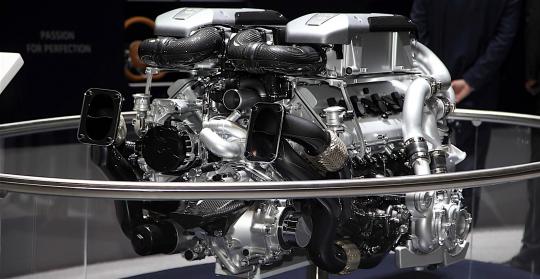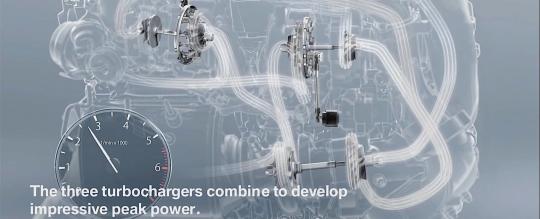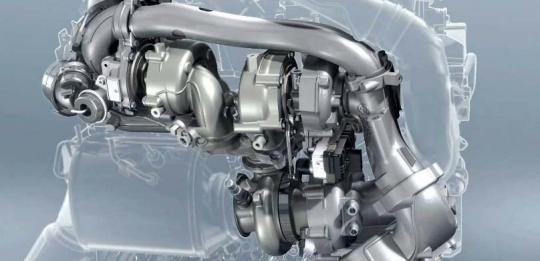As the years passed, turbocharged vehicles started providing more and more power, but their delivery has become more linear than ever. Every once in a while, an automaker launched a twin-turbo or a bi-turbo setup. Those vehicles were seen as outstanding achievements when people first heard of them.
Some customers had the opportunity to buy a twincharged vehicle, which blended turbocharging with supercharging for optimal throttle response and performance. Eventually, twin-turbo cars became something mundane, and single turbo engines can be found under the hoods of modest vehicles these days.
Even the most affordable models in an automaker’s range can be ordered with a turbocharged power plant, but it is now used as a downsizing solution instead of a way to bring massive amounts of power.
Things reached a status quo for a while, and then Bugatti launched a new quad turbo engine on the Veyron. The solution was first implemented on the EB110, but another company has further refined the idea and has replicated it in a new mass produced car, which will be featured below. After the Veyron’s launch, BMW surprised the world with a triple turbo setup, which they employed on a diesel engine.
With those power plants in mind, we decided to do a roundup of all production cars available today with more than three turbochargers under their hoods.
The plan was to make a top five, or only to select the most compelling solutions. Unfortunately for us, the world does not have that many multiple turbo setups in production so that we will review the existing ones in this story.Audi SQ7 – triple turbo V8

The first multi-turbo setup we review is the one found on Audi’s 2017 SQ7. It has instantly become the most powerful diesel engine offered on a production automobile, and the solution was interesting enough to be featured by Bentley.
The British brand is owned by the same German corporation that controls Audi, so the part sharing is not surprising, but it led to the first diesel offered in a Bentley.
We know that the V8 TDI units do not have three conventional turbochargers, but the implementation of the units is impressive enough to be featured in this story. The idea is that the power plant features two conventional turbochargers, which are supported by an electric turbo.
When reading electric turbo, do not think of those silly kits you can get on eBay. Instead, the electrically assisted turbocharger (compressor is the correct technical term here) has a dedicated electrical system, which operates on 48 V. Audi has eliminated turbo lag entirely lag with the setup, and it provides 900 Nm (663.8 lb-Ft) of torque and an impressive 435 HP.Bugatti Chiron – quad turbo W16

Bugatti used to have the only quad turbo setup in a production car in the world. They have been matched by an unlikely challenger, which will be featured below. Before we get into that, it is important to describe the engineering masterpiece that sits behind the passengers of the Chiron.
The Chiron has a W16 configuration, which is unique in the world of production automobiles. Several companies have tested the V16 engine configuration, but nobody except Bugatti made a W16.
With modern emissions regulations and the unimaginable costs associated with this development, we do not expect anyone to match the French brand owned by the Volkswagen Group on this chapter.
As you already know, the Chiron has a quad turbo setup, which is divided into two pairs of turbos that are fed from the two sets of eight cylinders.
The solution is named two-stage turbocharging, and is employed in many cars that are more affordable than a Chiron, but none comes close to the level of performance announced by this unit.
The top output is rated at 1,500 HP, while peak torque is 1,600 Nm. The eight-liter motor delivers its peak torque between 2,000 and 6,000 rpm. The latter is impressive in itself, but this is expected from a hypercar that is built by Bugatti.
BMW triple turbo 3.0-liter inline six

BMW surprised the world in 2012 with the introduction of a triple turbocharged engine. The shock was even bigger when the unit turned out to be a diesel engine, instead of a gasoline power plant. Furthermore, BMW put the M letter in front of the model designation of the resulting automobiles.
BMW offers the triple-turbo diesel engine in the 5 Series, 7 Series, X5, and X6. The last two get the M50d designation, while the 7 Series was named 750d.
The previous generation of the 5 Series was offered with this engine under the M550d name. All shared the ZF eight-speed automatic transmission and the xDrive system.
The triple turbo setup is a sequential solution. A small turbocharger provides a boost at low rpm, so that the engine can develop more torque right after idle, and this happens thanks to variable geometry. Shortly after, a big turbo supplies more boost for high torque in the low-to-mid range of revs.
The third turbocharger is designed to operate in the upper rev range. Contrary to expectation, it is the small secondary turbocharger, and not an even bigger turbo unit. This helps you accelerate from 2,500 rpm all the way to the red line.
All three turbos operate simultaneously. The result is a power plant that delivers 381 HP between 4,000 and 4,400 rpm, while peak torque is 740 Nm. BMW’s N57S provides its peak twist between 2,000 and 3,000 rpm.
BMW quad turbo 3.0-liter inline six

BMW is the only automaker besides Bugatti that offers a production automobile with four turbochargers. Unlike the solution employed by Audi for the SQ7, the quad turbo motor from BMW only uses conventional turbochargers, without any supplementary compressors. Bugatti applies a similar strategy, but on a larger scale and with over three times more power.
Regardless, the average mortal might get the chance to experiment the four turbos of BMW’s 750d, while the four turbochargers of the Chiron will only spool for the wealthy few. Coming back to the solution chosen by the Bavarian Motor Works, it has two pairs of sequential turbochargers on an inline-six cylinder engine.
Instead o
f a V8 or whatever configuration, BMW implemented the quad turbo setup on its signature inline six unit. Thanks to the group of turbos and high-pressure direct injection, the unit delivers 400 HP between 4,000 and 4,400 rpm. That is not a dramatic increase from the three-turbo predecessor, but it is something.
Peak torque is available between 2,000 and 3,000 rpm, and it is rated at 760 Nm (560 lb-Ft). The cool part about BMW’s quad turbo setup is the integration of two small turbos into a single housing, while the other two turbochargers are separate. The torque at 1,000 rpm is 450 Nm, half of what Audi’s SQ7 delivers, but without a 48-Volt electrical system, its associated compressor, and with one liter of displacement less.
We do not expect quad turbos to become mainstream, like single turbo engines have been for a few years, and the triple turbo solution from BMW might remain proprietary to the German automaker for a few years. The brand from Munchen might discontinue it to save room for four turbos, while smaller units will have to settle for TwinPower Turbo solutions.








